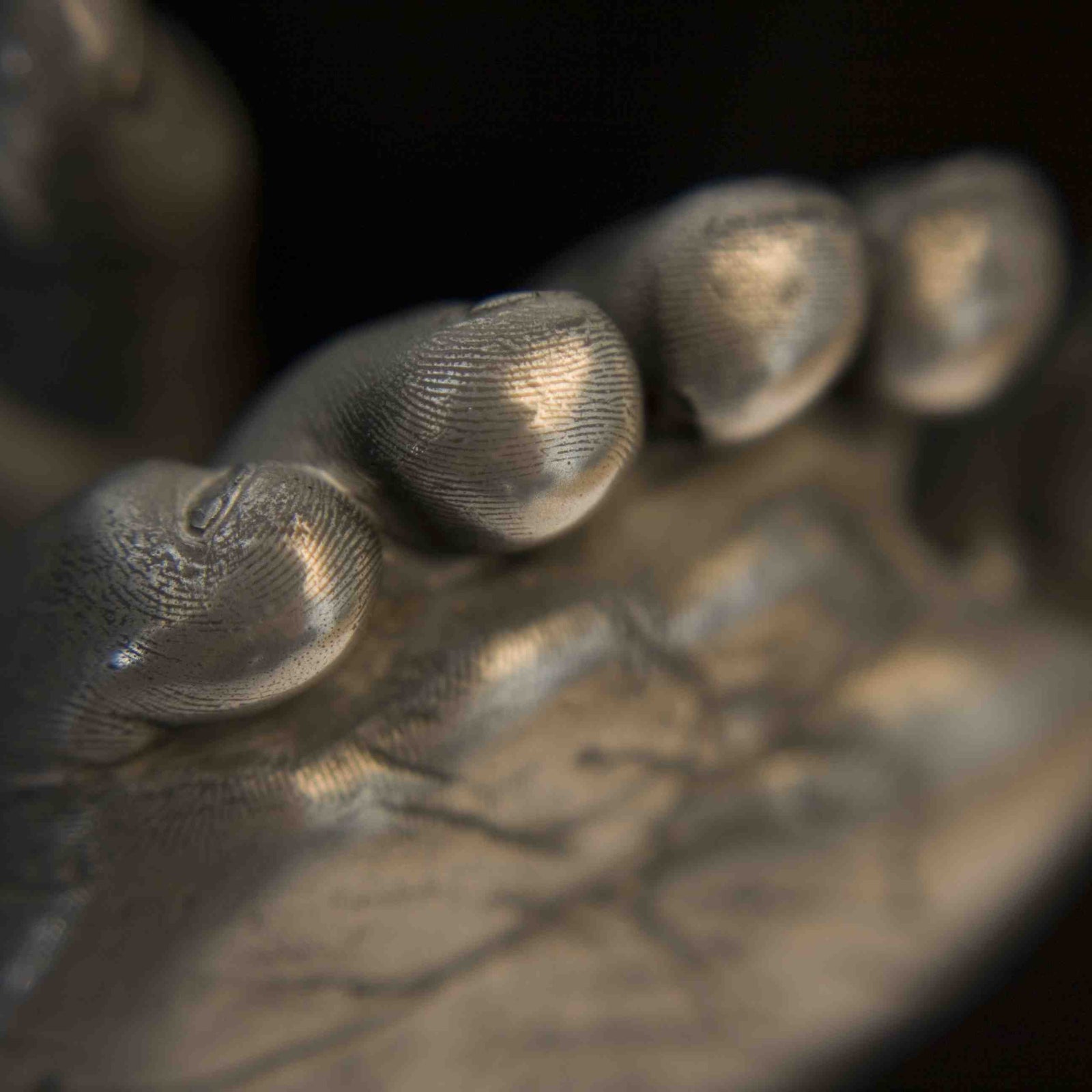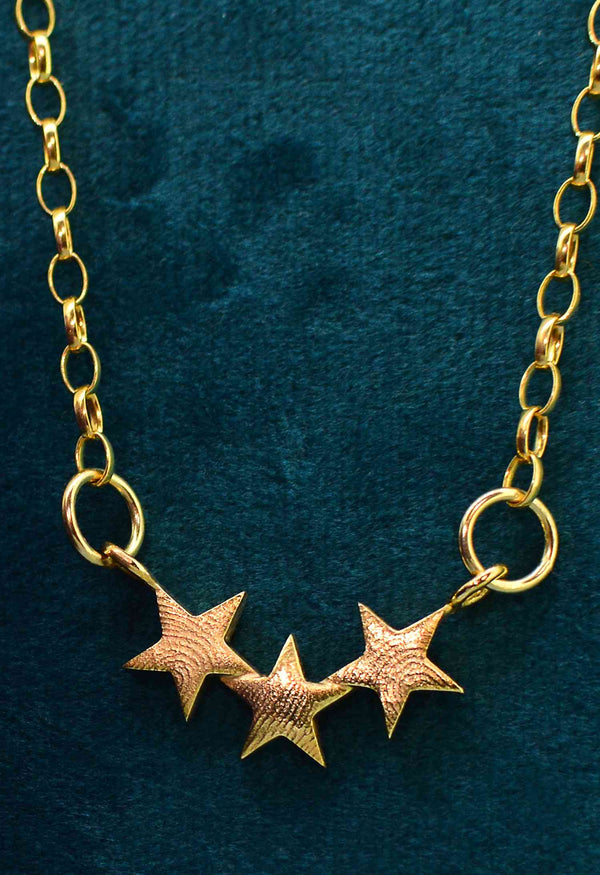Your Cart is Empty
~ Waiting List in Operation ~ Please Ask Before Ordering ~
~ Personalised jewellery to treasure forever ~
~ Waiting List in Operation ~ Please Ask Before Ordering ~
~ Personalised jewellery to treasure forever ~

How to Make Your Own Baby Hand and Foot Casts - Part 2
September 05, 2018 4 min read
If you followed my last blog post (How to Make an Alginate Mould), you should now have a mould of your baby’s hand or foot in front of you and you’ll be ready for the next stage.
Alginate gel is mostly made out of water and does not like to stay in gel form.
If you leave it sitting around for too long, it will start to dry out. The water will also start to “come out” of the gel and you will notice little puddles of water sitting inside your hand or foot mould.
This happens quite quickly and can affect the quality of the cast (you can get small water runs in the surface of your hand or foot sculpture), so I always recommend placing your moulds upside down once made and casting as soon as possible.
To make your hand or foot sculpture, you will need
- Paper towels or kitchen roll to cover your work surface:
You are going to be mixing up and moving around a lot of liquid plaster. It can be pretty messy.
- An apron or old clothes - See above.
- 2 jugs or suitable mixing containers (2 litre ones are usually a good size for babies and young children).
- A large strong desert spoon.
- A set of digital kitchen weighing scales.
- A small, blunt kitchen knife (keep out of reach of children).
- Good quality plaster
You can purchase plaster from a lot of places, but I would highly recommend the Basic Alpha Plaster from Alex Tiranti. It’s not the cheapest, but it’s specifically made for casting and you get a good amount (5kg) for less than £9.
It is a reliable quality, has a good working time and gives clear instructions for mixing it up, unlike a lot of others you can find elsewhere.
- Plaster Polymer.
Plaster polymer is mixed together with alpha plaster to make what we call ‘acrylic plaster’.
Firstly, I will explain that you do nothave to make your sculpture using plaster polymer.
You can make a perfect little hand or foot cast by mixing the alpha plaster with plain, cold water, but there is a downside to this:
Sculptures made from plaster mixed with water can be fragile. The plaster tends to be brittle and the casts are easy to damage. The plaster also becomes increasingly more fragile as it ages.
This is not necessarily going to be a problem if you are keeping the hand or foot cast in a safe place where it will not be handled.
Plaster polymer is specifically made to be combined with alpha plaster and other casting plasters. It creates extremely hard, strong casts that do not deteriorate and are less prone to breakage.
Like the alpha plaster, you can buy 1 litre of plaster polymer from Alec Tiranti for just under £10.
Making a Baby Hand or Foot Cast
- Prepare your workspace.
Make sure all surfaces and clothes are covered.
Lay out all of your tools and ingredients within easy reach and make sure they are completely ready.
- Using your weighing scales, carefully measure out your plaster polymer (or water) and alpha plaster.
For an average baby under 12 months old, you should need:
- Pour your plaster polymer into your mixing container and add your alpha plaster (never the other way around).
Mix firmly and steadily using your large spoon, trying not to add too much air into the mixture. Continue until you achieve a lump free mixture that looks like double cream.
- Slowly pour your plaster into your mould, tapping the sides of the container and gently shaking it in all directions.
Tip your mould upside down, pouring all of the plaster back into the container.
- Repeat this plaster pouring and re-filling process 3 times.
This will remove any water that remains in the mould to stop water runs in your sculpture and will also (hopefully), make sure that the plaster fills any air-locks caused by curled over fingers or toes.
- Now fill up the mould one final time, tapping the sides of the container and gently shaking it, to try and remove any remaining air bubbles.
- Leave your plaster to set for 1-2 hours.
Do not be tempted to try and remove the sculpture from the mould before this time is up.
You will seriously damage your cast if you try to remove it from the mould before it is completely set.
- Once the 2 hours is up, you can remove the plaster cast from the alginate mould.
Slide your blunt knife down each side of your mould container to break the seal.
Tip the container upside down and remove the alginate mould.
- Gently and carefully cut away the alginate gel with the blunt knife, being very careful not to cut into the hand or foot sculpture.
- You can dispose of the waste alginate with your general household waste. It will continue to lose water, so it’s best to put it into a bag.
- Carefully inspect your hand or foot cast and allow to completely dry.
You can remove any small bits of excess plaster with a small file. Any tiny holes can be filled using polyfiller.
So now you should have a perfect hand or foot sculpture. It will be white like the plaster and you can now decide whether you want to paint it, or display it in a different way.
Leave a comment
Comments will be approved before showing up.
Subscribe
Sign up to get the latest on sales, new releases and more …

Join the Club
WE'RE SO PLEASED TO SEE YOU!
Stay a while and look around.
While you're here, why not subscribe to our newsletter?We'll give you £20 off your first order, VIP access to new products, and access to our very special sample sales.We promise not to annoy you (honest).
